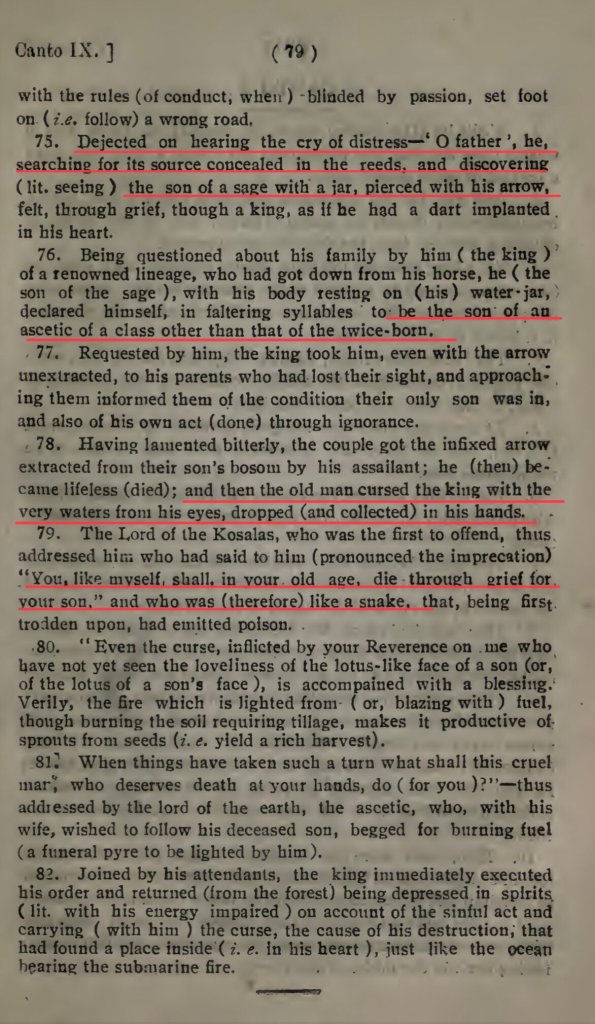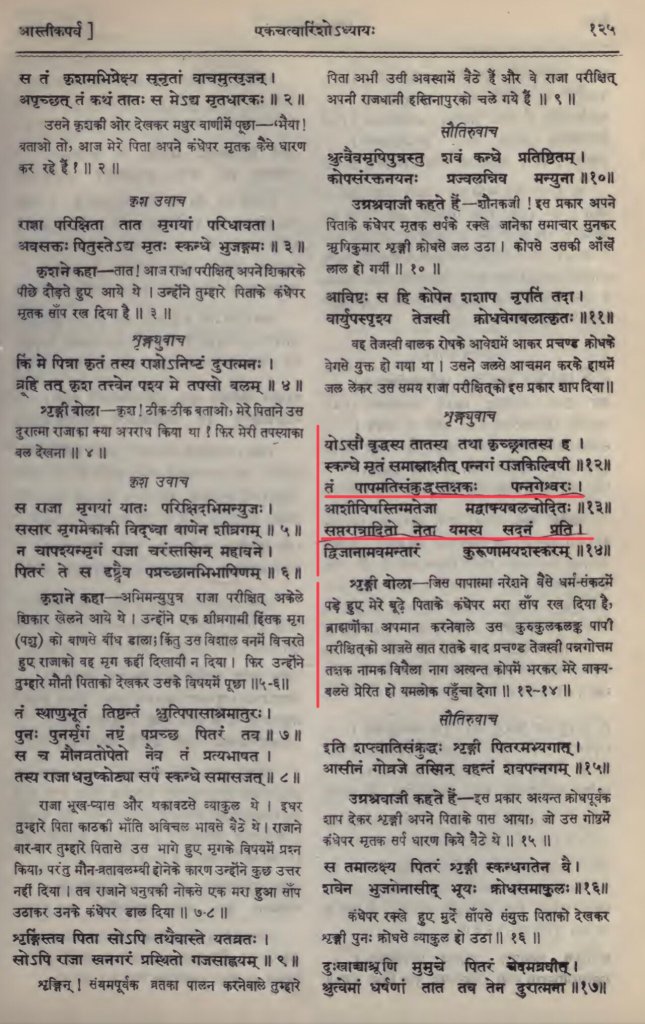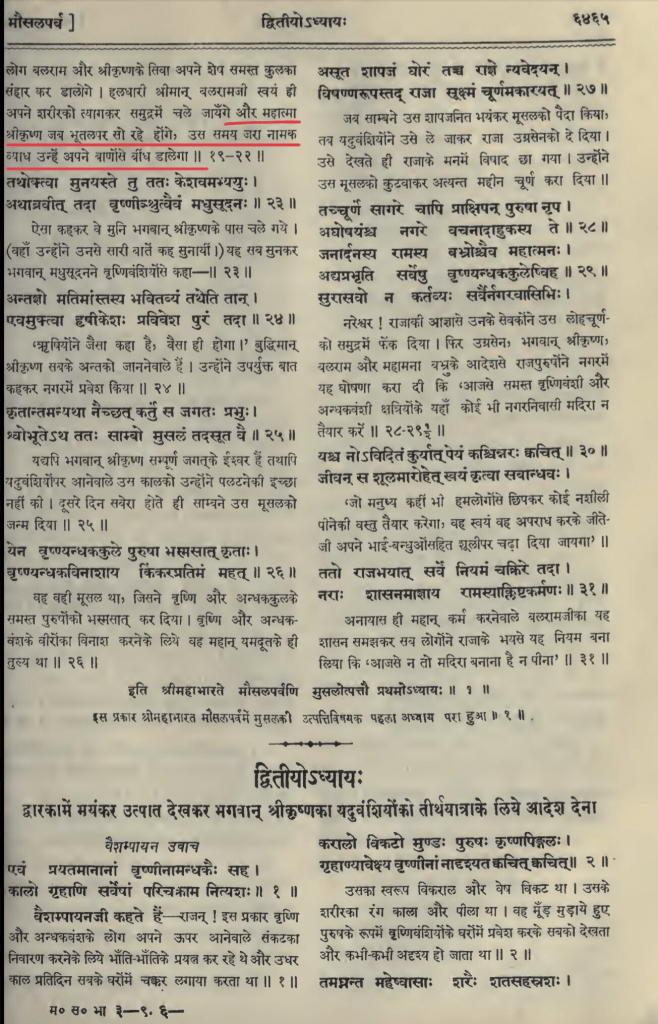Hunters । शापाः । Itihasa
A recent tweet mentioned how Western critics ignorantly claim ‘tragedy’ is absent in भारतीय इतिहासकाव्यानि

Let us see if the Western claim is true
Our Itihasas are replete with examples of tragedies – innocuous events spiraling wildly out of control, causing grief and destruction to all concerned
Take Hunters & Curses
Numerous episodes involve wayward hunters, hurled imprecations & unleashed chains of Karma that changed the course of events in uncontrollable ways …in addition to sparking off brilliant & beautiful Kavyas, Itihasas & Puranas
Let us explore 5 interesting episodes!
#1 आदिकाव्यम् & आदिकविः।
Starting from the very beginning, the AdiKavya, Ramayana, Maharshi Valmiki, while taking a dip in the Tamasa river sees a krauncha couple shot-down by a wayward hunter
At the close of this scene, he hurls the famous imprecation मा निषाद !

This beautiful & heart-rending scene is captured here
पतिना सहचारिणा ताम्रशीर्षेण मत्तेन…….निहतं महीतले वेष्टमानं शोणित….दृष्ट्वाकरुणां गिरं रुराव।
Separated from her winged, copper-crested companion, drenched in blood and intoxicated in love, she lets out a piteous wail




The perturbed poet finds an inspired outlet for his Shoka (deep sorrow) by composing the first Shloka that ultimately leads to the Ramayana
शोकार्तस्य प्रवृत्तः मे श्लोको भवतु नान्यथा।
He specifically defined Shloka as पादबद्धोऽक्षरसमस्तन्त्रीलयसमन्वित।

So we see that the inspiration for Ramayana & the very concept of Shloka itself arose from an episode involving a hunter & a curse
Tragedy transformed to beauty here..
#२ Dasharatha’s Careless Arrow
Ramayana’s arc is intimately connected to another hunting episode involving दशरथः।
In a deliciously painted fractal scenario, Valmiki reprises his own experience when he describes Dasharatha on a hunt, along the banks of the same Tamasa River!
Dasharatha, an accomplished hunter, hearing in the distance what he thought to be ‘sound of elephants’ drinking water, lets loose his arrows ‘sight unseen’
He shoots by mistake, an young ascetic collecting water from the river

The Adikavi describes the frightening & gut-wrenching scene movingly
A confident Dasharatha, supremely sure of his ability to aim at ‘mere source of sounds’, letting loose a volley that inexorably finds its tragic mark..that gets events spinning out of control…




Then, a guilt stricken Dasaratha decides to break the news to the blind and old parents in their hermitage
A beautiful sequence of poetry follows ..and Dasaratha receives the curse that leads to the tumultuous events magnificently described in the Ramayana




It is interesting that the same incident is captured by the inimitable Kalidasa in the Raghuvamsam


दिष्टान्तमाप्स्यति भवानपि पुत्रशोकादन्त्ये वयस्यहमिव…..
You will also, in your old age, face death like me, filled with Putra-Shoka !


#3 Pandu’s Deliberate Shot
Mahabharata, the ‘Panchamaveda’ has chains of events intertwined with hunting mishaps
Pandu, engrossed in a hunt, see a deer couple in maithuna & decide to shoot them
Turns out it was the Muni किंदम & his wife frolicking in the shape of two deers.


The crestfallen Kimdama curses Pandu thusly
वर्तमान सुखे दुःखं यथाहं प्रापितस्त्वया तथा त्वां च सुखं प्राप्तं दुःखमभ्यागमिष्यति।।
Kimdama’s famous curse leads to Pandu’s enforced brahmacharya, the peculiar circumstances behind birth of Pandavas & the all the events emanating from that point onwards….

#4 Pariskhit’s Death Foretold
Yet another hunting mishap leads to the episode of Takshaka killing the lone remaining Pandava descendant, Parikshit, son of Abhimanyu
To avenge this event, the Sarpasatra was consequently conducted by Parikshit’s son Janamejaya to destroy all Nagas!


In yet another delicious fractal irony (too many of them in the Itihasas !), it was at this very same Sarpasatra that the Mahabharata was narrated by Vaishampayana, the disciple of Veda Vyasa, for the very first time….

Parikshit on a hunt gets really tired & thirsty pursuing his prey across deep jungle
He then comes across Muni Shamika meditating in Mouna-Vrata
Frustrated on receiving no response to his queries, Parikshit takes a dead snake with his Dhanushkoti & places it on the Muni’s shoulders

Shamika’s hot-headed son, Shringi, on hearing about this insult to his father, curses Parikshit
“Takshaka, the Naga par-excellence will cause Parikshit’s death within 7 nights –
सप्तरात्रादितो नेता यमस्य सदनं प्रति”
This again sets the wheels of tragic consequences in motion..



This foretold death of Parikshit causes Janamejaya to arrange the famous SarpaSatra and hence the beginning of the Mahabharata!
Talk about tragic twists & turns caused by seemingly commonplace errors (here in hunting) that have consequences that leads to Pralaya !
An now, the final episode
#5 Kali Yuga Begins
Kaliyuga starts with an act of a wayward hunter, Jara who accidentally shot the योगयुक्तं शयानम् Bhagvan ShriKrishna on the sole of the feet, mistaking him for a sleeping prey
As is usual, these events were also foretold, a consequence of continuous chains of Karma

Gandhari’s curse conveyed to Shri Krishna, led directly to the destruction of the Yadavas
Samba, Shri Krishna’s son plays a prank on visiting Rishis & is consequently cursed to give birth to an iron pestle

Bhagavan Krishna knowing the future, instructs the iron pestle to be ground to dust and cast into sea
Some of the powdered metal is swallowed by a fish which happen to be caught by Jara, the hunter
Jara then fashions an arrow with the same metal
This arrow is the one that the hunter shot by mistake……
And inaugurated the Kali Yuga



So hunters, curses and tragedies – events that spiral and end in Pralaya – starting off from minor errors of judgement – all woven together in beautiful prose and poetry – to exemplify and embody Dharma!
जयतु संस्कृतम्। जयतु भारतम्।